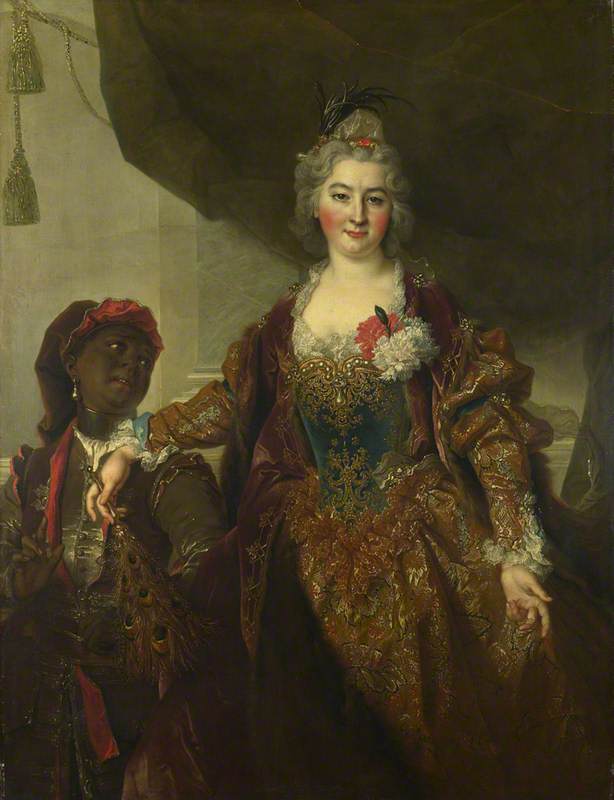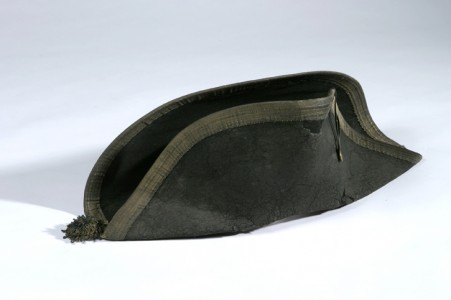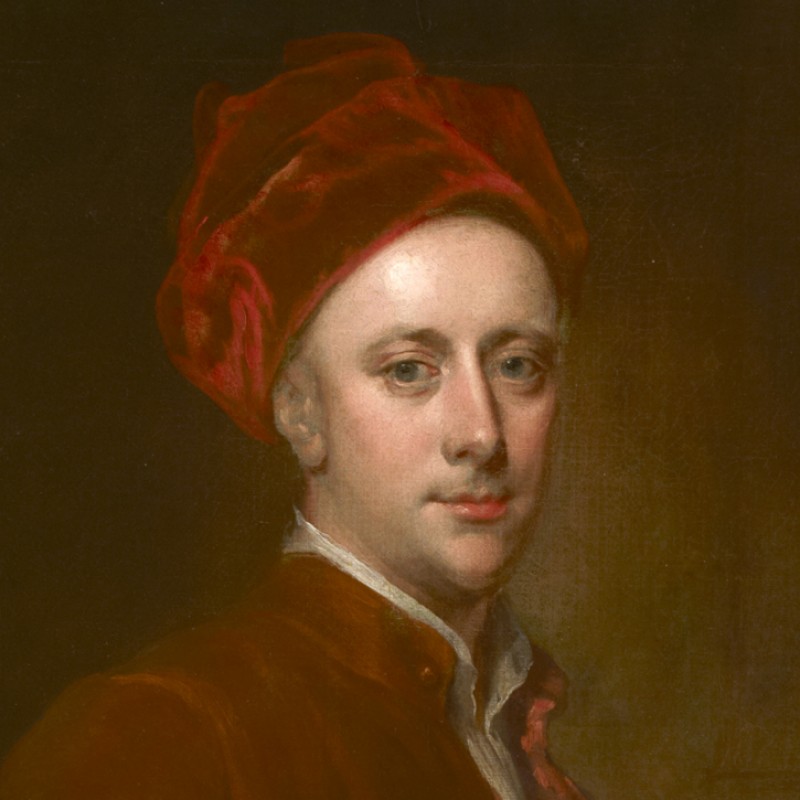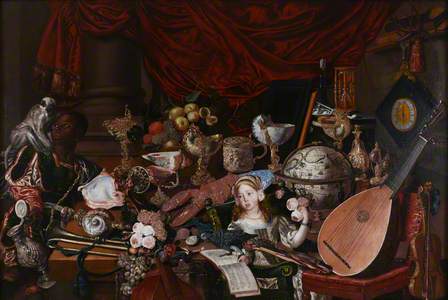The first impression is of profusion and confusion. There are references to wealth, music, travel and alchemy. A skewed perspective and the odd positioning of figures and objects compound its strangeness. Faded pigments have altered its colour balance.
The Paston Treasure
(formerly titled 'The Yarmouth Collection') c.1665
Dutch School 
The Paston Treasure conforms in part to seventeenth-century Dutch 'vanitas' still-life traditions – the artist, however, eludes identification. Elements within such paintings (timepieces, sand-glass and just-extinguished candle), remind us of time and death, mocking the gold that advertises the patron's worldly wealth.
The girl in the picture might be Margaret, daughter of Robert Paston, a seventeenth-century politician, courtier and alchemist. Robert's father, William, a collector and traveller, probably commissioned the painting and acquired much of the collection it depicts. He may possibly have also purchased the young man depicted on the image's left. There is no evidence of enslaved servants at Oxnead Hall, Norfolk (the Paston family seat from 1420 and 1732), but, true to contemporary classist and racist norms, their presence may be unrecorded.
Another anonymous figure was revealed by X-ray imaging: a woman to the right. Intriguingly, this area was painted three times in quick succession, first with a silver dish, second with this woman, finally with the present clock.
Most vanity still-lifes contain gilded objects included only for their symbolism. However, five treasures from this painting survive today and correspond to inventories of the Pastons' possessions once in Oxnead Hall, which included hundreds of similar treasures.
Robert Paston was a lavish spender and had sent money to Charles II during the civil war. Like many royalists, the Pastons were required to give quantities of silver to parliament. After the Restoration, despite royal favour, Robert struggled. By his son William's death in 1732 the family was bankrupt and Oxnead Hall abandoned.
The myriad complexities of this painting fascinate audiences of all ages. It also conveys a vanished world, an ironically accurate portrayal of the fragility of the Pastons' wealth and of its magnificent collection, now mostly lost.
Dr Francesca Vanke, Senior Curator, Norfolk Museums Service









